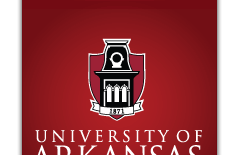Keywords
modeling, broiler, growth
Abstract
Modelling techniques have been used in many industries globally to illustrate to others an understanding of the way processes work. Also, engineers and scientists employ models to predict the consequences of various courses of action. Simple pictorial models, such as the diagram of the chicken digestive system, are useful in education and may be more suitable than a photograph for the purposes of explaining how the animal converts ingested feed into components that can be assimilated, leaving residue that is excreted. Complex, predictive models seek to quantify a specified outcome based on defined inputs. Many attempts have been made over the past four decades to develop suitable growth performance response models for broilers. Broiler simulation models that have been developed, fall into two broad categories; firstly, empirical, stochastic models and, secondly, mechanistic, quantitative models that seek to represent the underlying mechanisms that produce end results. Whilst empirical models employ a series of equations derived from research observations to predict growth performance, they do not necessarily represent an understanding of the causal underlying mechanisms. The advantages of a robust mechanistic model allow the user to alter the response over time obviating the need for continuous experiments, required to constantly keep empirical models updated. Integrated broiler operations are surprisingly complex due to many variables requiring consideration and, must ultimately drive an objective function that maximises business profit per unit of broiler barn (or broiler shed) space over time. The EFG Broiler Model represents a mechanistic tool that predicts feed intake and growth response via a modified sigmoid Gompertz function, or growth curve. Although other mechanistic models are available, this paper will consider only the EFG model, as a proxy for good mechanistic broiler growth models. Thus, the purpose of this paper is to examine the application of the EFG model as an indispensable tool for broiler integrators and nutritionists.
Recommended Citation
Chrystal, Peter
(2022)
"Application of Simulation Modelling in Broiler Integration: Is it a Necessary Nutritional Tool?,"
Proceedings of the Arkansas Nutrition Conference: Vol. 2022, Article 12.
Available at:
https://scholarworks.uark.edu/panc/vol2022/iss1/12
